The 10 Most Colorful House Plants With Red Leaves
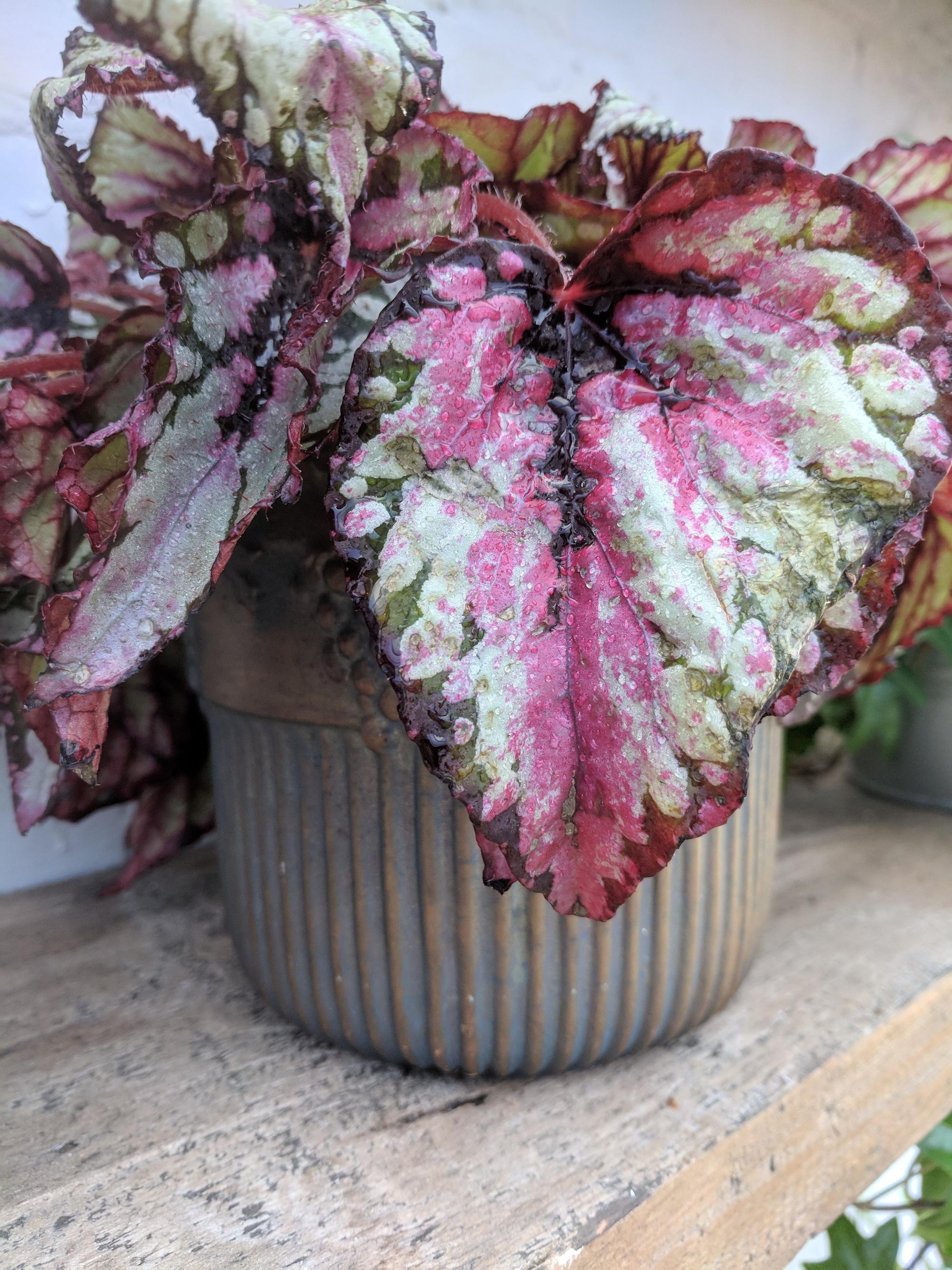
The most colorful house plants with red leaves are Coleus, Poinsettia, Caladium, Anthurium, and Rex Begonia. Their lush flowers and foliages beautify the home. They can also improve mood, reduce fatigue and purify the air.
Choosing the best house plant with red leaves is tricky because each has varieties that thrive in different environments.
If you’re like most people, you may even want to give up on growing red plants indoors if you don't feel like you have the green thumb that keeps indoor plants alive.
This article will explore the ten most colorful house plants with red leaves you can start planting today, their descriptions, and simple tips to care for them.
Let’s get started.
1. Coleus (Coleus blumei)
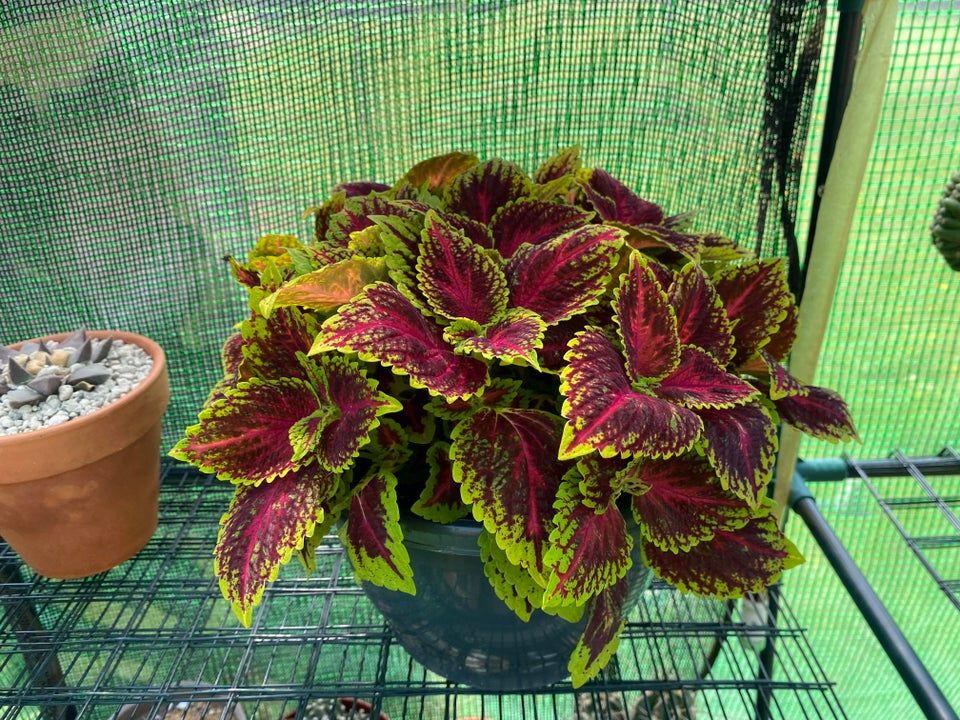
Coleus plant is also known as “painted nettle” and “poor man’s croton.” Many gardeners love it.
Although its dominant color is red, Coleus also has maroon, green, pink, and yellow foliage shades. Its delicate, stunning appearance and wide variety of leaf sizes and shapes make it an excellent fit for any area of your home.
Growing Coleus requires low maintenance, and you can start one in a container or flower bed.
The best time to plant Coleus is in the summer, around ten weeks after the last frost period in your region.
You should plant them in a spot away from the wind because of their weak branches.
To get a plump and shiny result:
- grow Coleus in a fertile, well-drained, and moist soil
- Inspect for pests like whiteflies and aphids
- If the topsoil is dry, add water.
2. Poinsettia (Euphorbia pulcherrima)
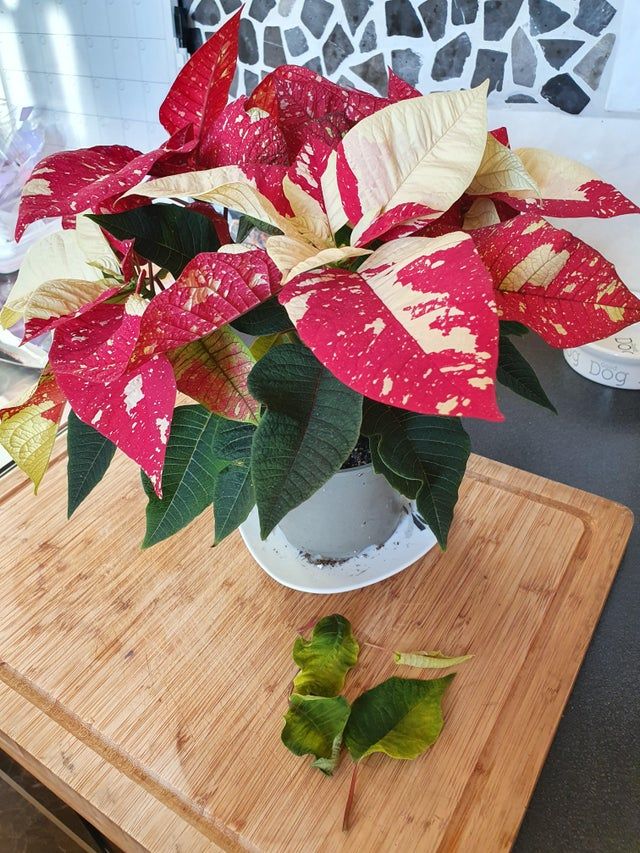
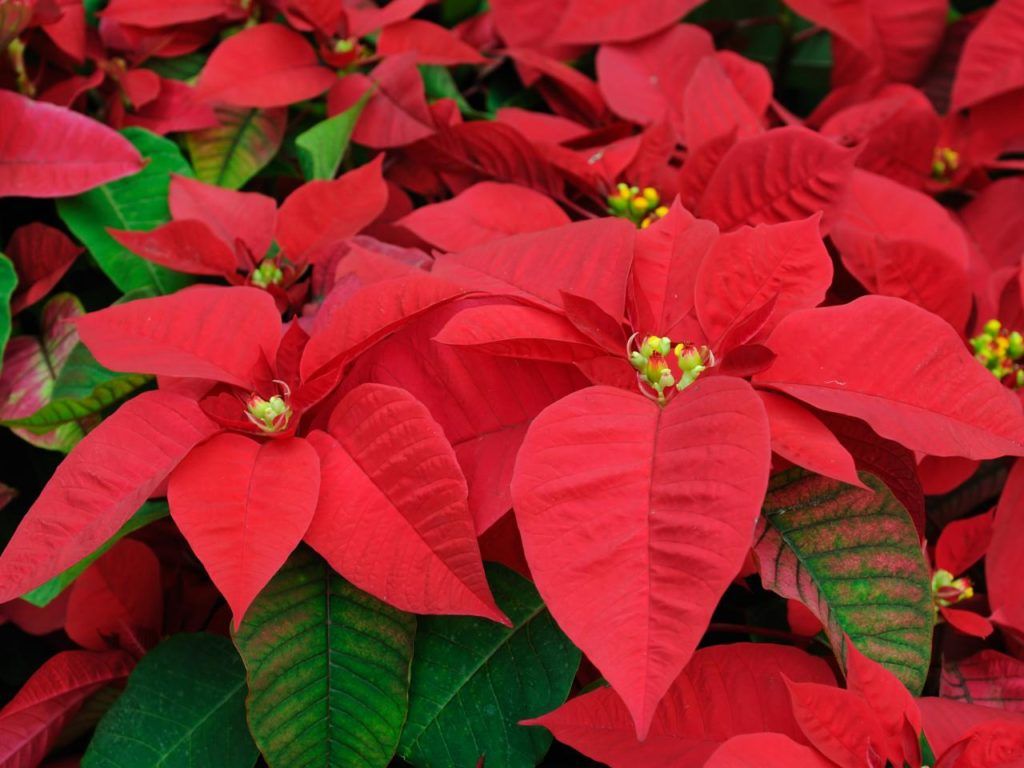
Poinsettia has its background in Mexico. It’s also known as Flower of the Holy Night (Flor de Noche Buena).
It is the most popular red houseplant for holidays in America.
Due to their delicate nature, you must follow some precautions to keep them alive.
What you can do is:
- Protect it from cold temperatures and frosty winds because of Poinsettia’s tropical nature.
- Place it in a spot where it will catch abundant sunlight; otherwise, it will lose its color.
- Water it ONLY when the first layer of soil is dry. Overwatering kills a Poinsettia plant.
- Cut poinsettias back when they’ve finished flowering so that they don’t become leggy.
- Keep the temperature optimal. If it is too uncomfortable for a human, it probably is for the Poinsettia.
3. Caladium Plant
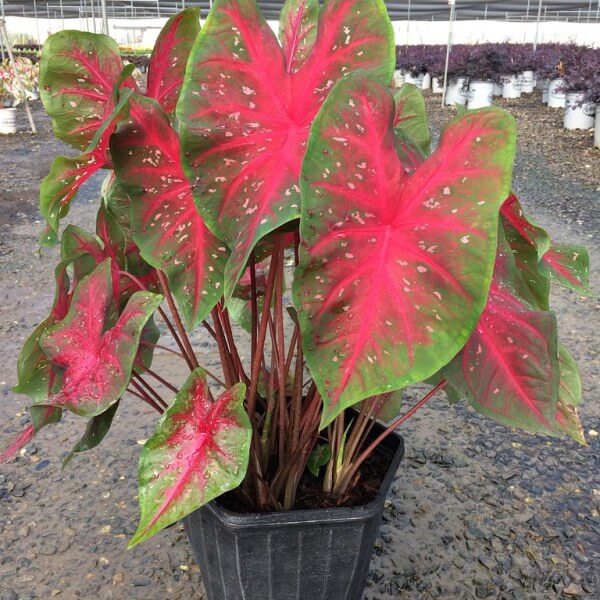
With colorful, large heart-shaped leaves, long and slender stems- you will hardly miss the sight of a Caladium.
Spring and summer are the best time to grow Caladium bulbs because they thrive best in warm temperatures.
The rule of thumb is to keep the bulb in a spot with sufficient but indirect sunlight.
Caladiums turn dull and weak in fall and eventually become dormant in winter. But that’s not the end. If you can store the pots in a dark and cool spot and re-pot the tubers in spring, it will revive their colors.
Other care routines for growing Caladium include:
- Fertilize the plant with nitrogen-high liquid products in 2 weeks intervals.
- Cut out small tubers when repotting and plant them in separate pots
- Checking that the soil is moist at all times.
4. Anthurium (Flamingo Flower)

The Caribbean and Central Africa is home to Anthuriums (also called “flamingo flowers”)
Like the Poinsettia, Anthuriums are also a centerpiece for the Christmas holidays because of their unique heart-shaped waxy spathes and elegant red flower spikes.
They are among the houseplants with red leaves that require plenty of warmth and humidity.
Depending on the variety you choose, some Anthuriums are climbers. Its stems are pretty strong and grow shiny leaves.
To keep the Anthurium blooming all year, do these:
- Plant in a coarse and moist potting mix
- Never let the soil dry out completely because the plant will suffer
- Keep the pot in a spot with enough bright indirect sunlight
- Keep the temperature warm, typically between 65 and 85° Fahrenheit.
- Add phosphorus-high liquid fertilizer once every three to four months.
- Remove dry and wilting leaves to help the plant reproduce fresh ones.
5. Pencil Cactus (Euphorbia Tirucalli)

Pencil cactus is a shrub plant that thrives well in semi-arid tropical climates. Also known as “milk bush,” it derived its most common name from its pencil-thick and rounded branches.
The pencil cactus is one of the few houseplants with red leaves that requires little attention. Its succulent stems can store water for up to a month.
So if you’re a traveling person, this may be the plant for you.
But you need to be careful with this plant because of its toxic sap.
Here are a few tips for planting a Pencil cactus
- The beginning of the spring season is the best time to plant your pencil cactus.
- Don’t be shy to place the pot under direct full sunlight; they love it.
- Use a sandy and well-drained soil
- Keep pets away from it.
6. Croton (Codiaeum variegatum)
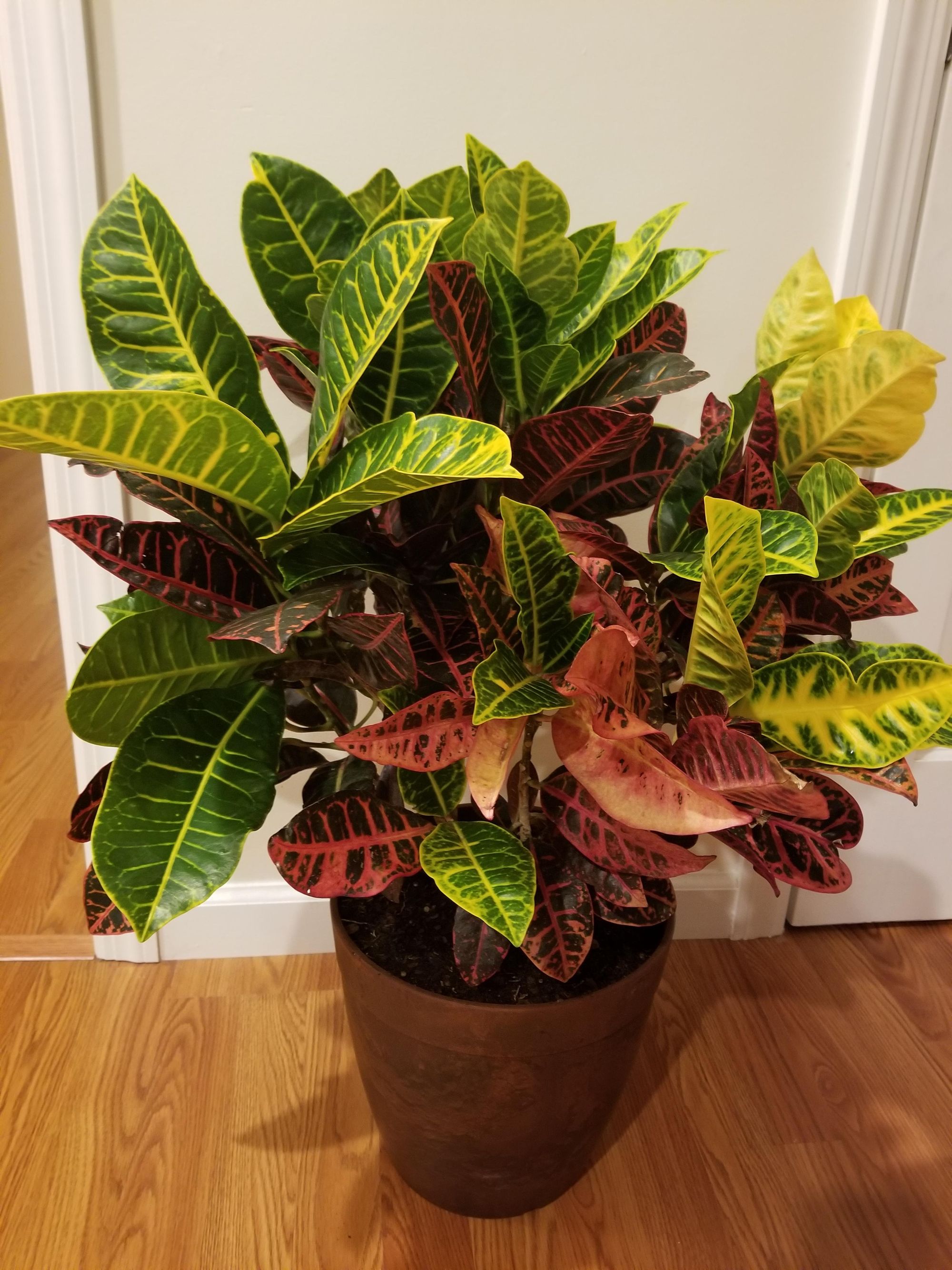
Crotons have beautiful foliage in various colors, including red, pink, orange, yellow, and green. Croton plants come in over a hundred varieties, with variegated oblong or lanceolate leaves.
In some regions, the red croton plant, also called ‘Mammy Red,’ is known for its long, curling leaves and is often grown outdoors as ornamental shrubs.
A Croton will lose all of its leaves if it becomes too chilly and turn out a vibrant tropical color if you keep the temperature at 70 to 80° Fahrenheit.
The best practices for growing colon indoor are to:
- First, plant them in humus-rich and acidic soil.
- Mist the plant daily to avoid infestation
- Maintain the ideal temperature to keep spider-mites off
- Watch for signs of wilting and increase watering accordingly.
- Do not relocate the potting too frequently, or the plant will lose its leaves.
7. Chinese Evergreen (Aglaonema commutatum)
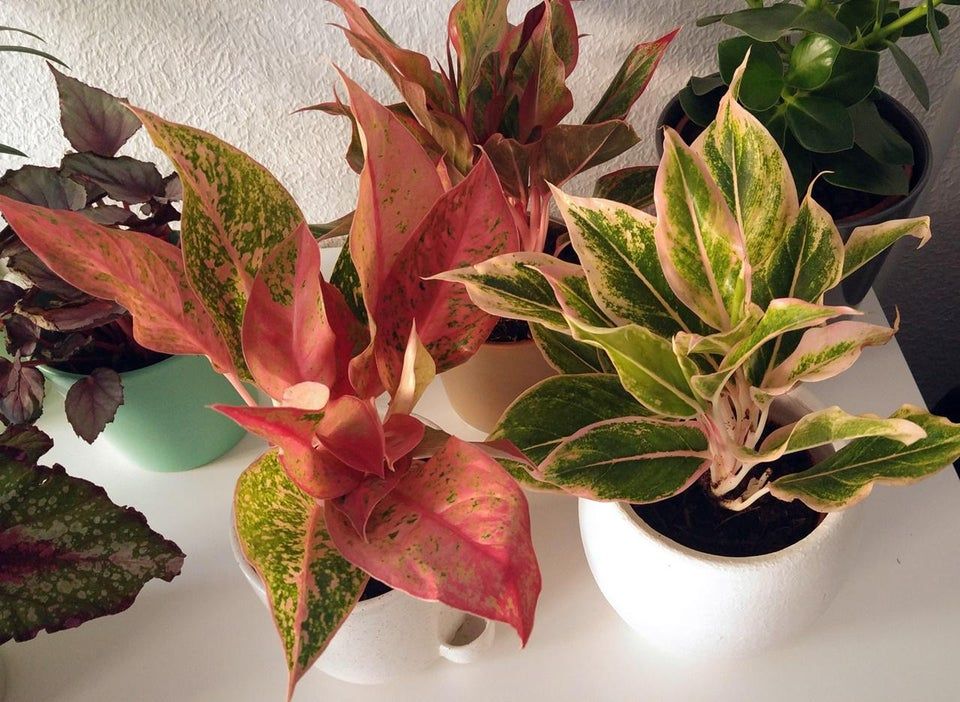
Chinese evergreen is a group of Asian indoor plants. They include the Aglaonema ‘Siam Aurora’, Aglaonema ‘Red Anjamani, and Aglaonema ‘Valentine.
Slow-growing Chinese evergreens are great interior foliage plants that can be planted and maintained all year.
They grow well in indirect sunlight and well-draining soil mix. However, if you have pets, be aware that the plant is harmful to dogs and cats.
Cold drafts and temperatures below 65° Fahrenheit are not suitable for these plants.
For the best result:
- Add liquid fertilizers at the beginning and end of the planting season.
- Mist it frequently to enhance the humidity level.
- Watch for common pests like spider mites and mealybugs.
- Keep it away from direct sunlight.
8. Bromeliads (Bromeliaceae)
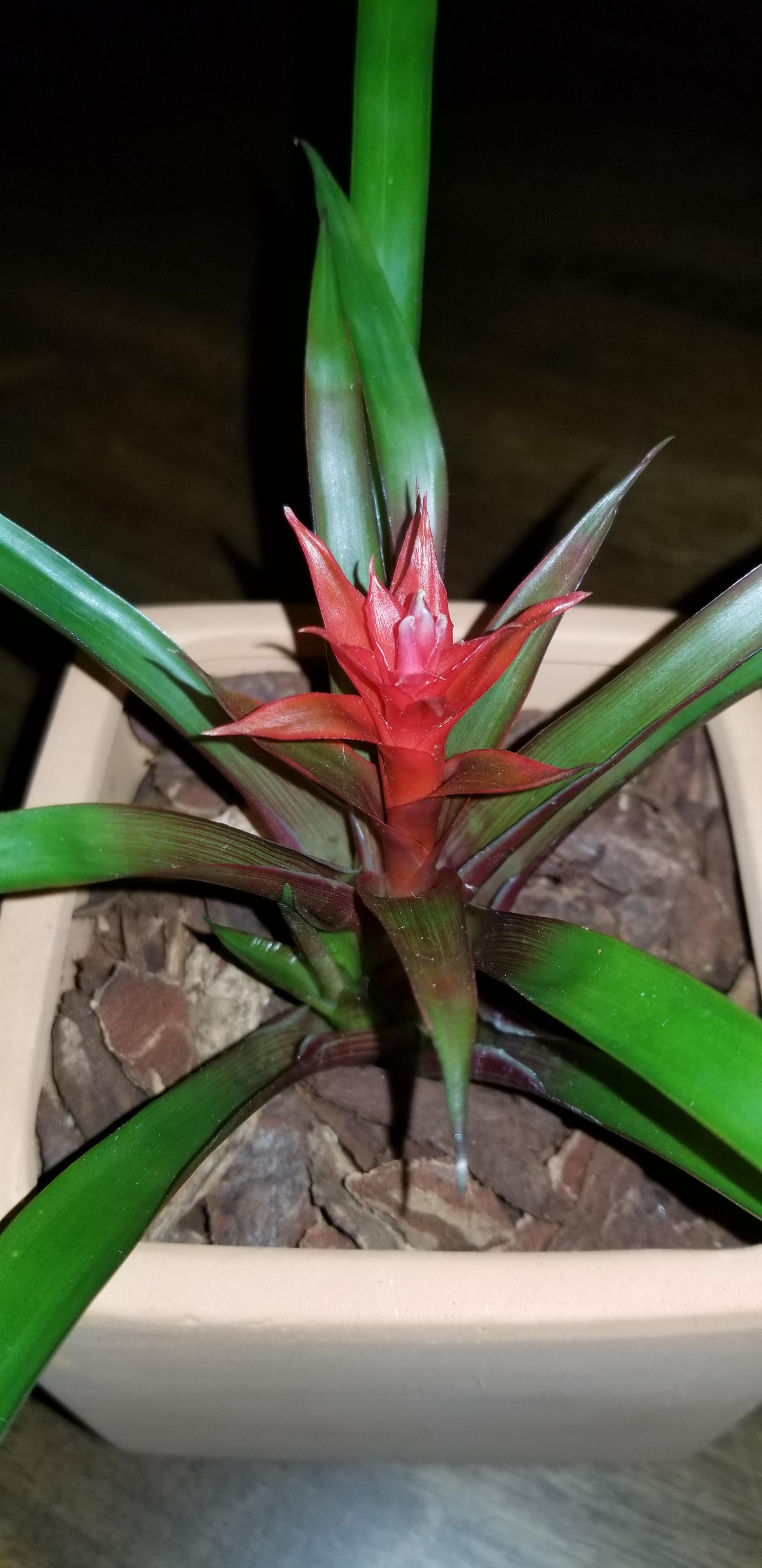
Planting the red species of Bromeliad as an indoor plant is easy.
Although it can take up to three years to reach maturity, its bands, stripes, spots, and other elegant features make the wait worthwhile.
Indoor plants such as bromeliads are low-maintenance. Keep them out of direct sunlight, though, since this might cause the leaves to burn.
While the conditions for growing bromeliads vary from one species to the next, you can apply the following tips generally:
- Keep the variety with flexible spineless leaves in a spot with low light levels. However, the species with thick leaves can thrive well in areas with bright indirect light.
- Grow the plant in well-drained potting soil. A mixture of sand and peat-based soil is ideal.
- Water the plants moderately during the growing season and less frequently in winter. Always pay attention to the central cup of the plant to flush stagnant water.
- Bromeliads do not do well in temperatures under 40° Fahrenheit. Keep them between 55 and 80° Fahrenheit.
- Bromeliads should be planted in small pots that do not hold water because they have small root systems that rot if waterlogged.
9. Nerve Plant (Fittonia)
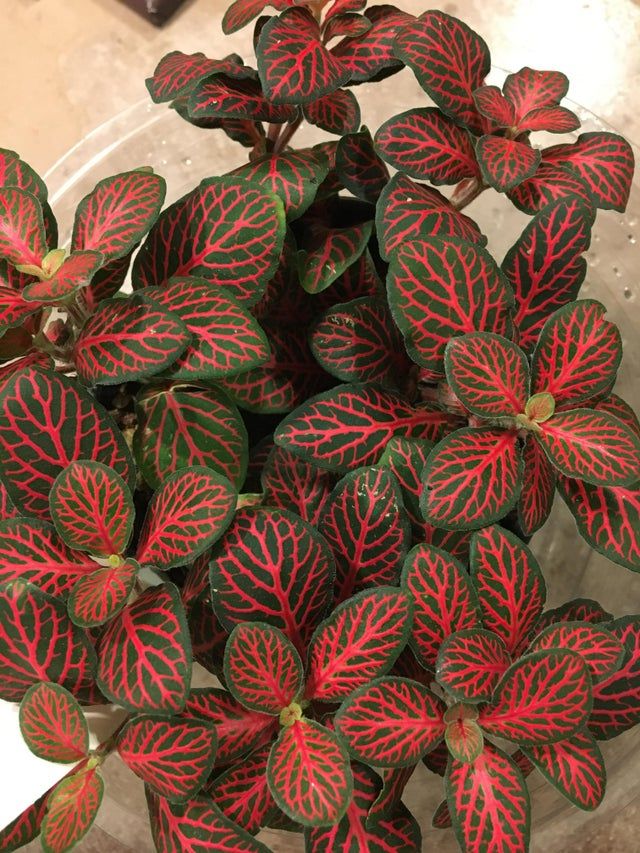
Nerve plant or Mosaic plant is known for its white, pink, or crimson veins that shine against oval green foliage.
It grows low along the floor of tropical jungles in the South American environment. Thus, it is an excellent choice for filtered light areas.
It is called the “Red Anne” or “Red star” in some regions, and the intense pink-red lining on its ovate leaves gives it a stunning appearance.
Here are some tips to keep the nerve plant blooming all year round:
- First, make sure the plant isn't exposed to direct sunlight.
- Mist the plant occasionally to keep it moist and maintain high humidity.
- The nerve plant grows well in peat-based and well-draining potting soil.
- Fertilize the nerve plant weekly during the growing season
- Always prune the stems when they grow leggy
- Treat the infestation of mealybugs and fungus gnats immediately with neem oil or other effective insecticide oils.
10. Rex Begonia
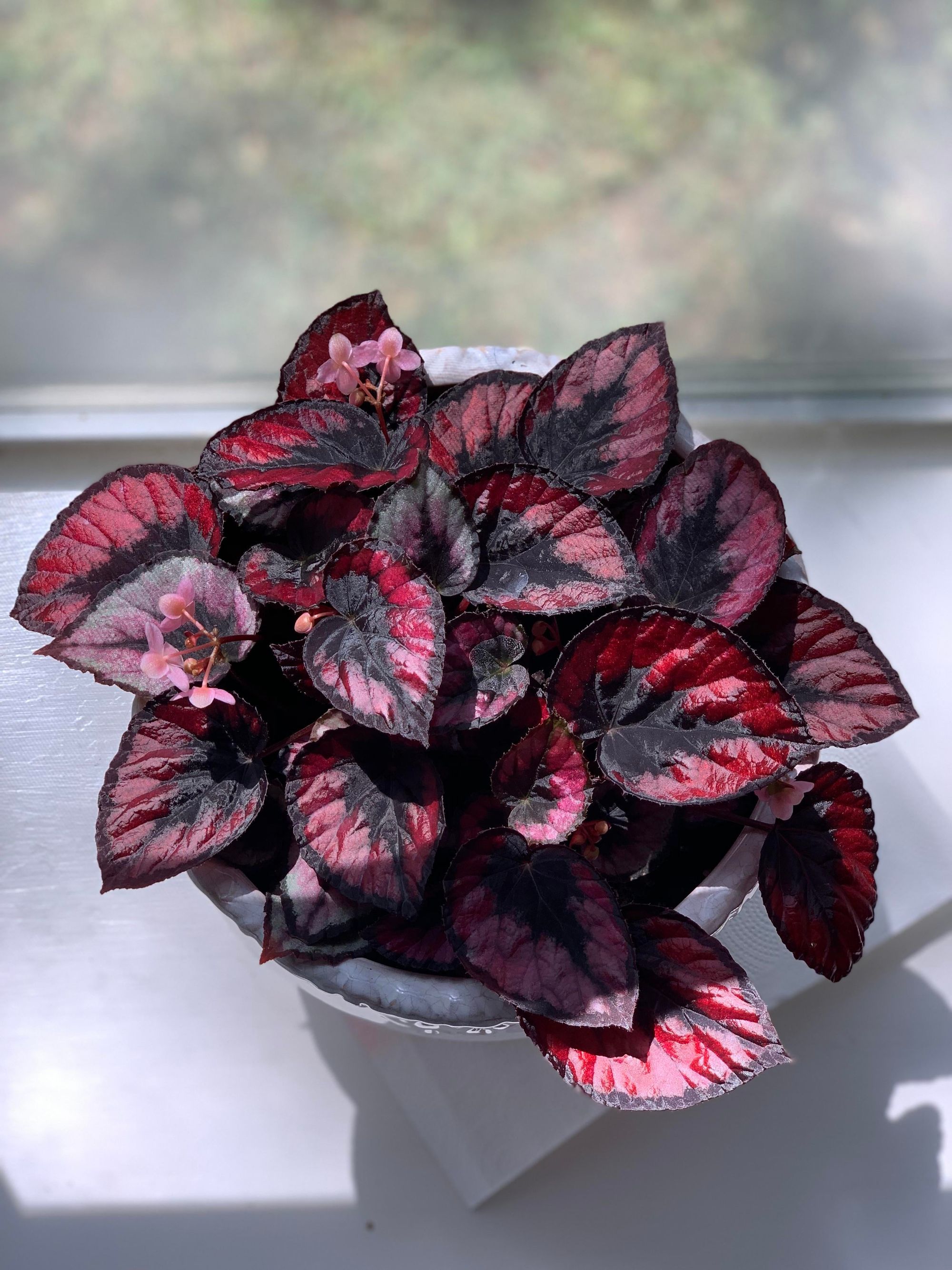
Rex Begonias is among the most beautiful Begonia species.
This spectacular houseplant with red leaves has a range of leaf shapes, including hearts, ivy-like forms, and seashell swirls.
While it is native to tropical regions, the Rex begonia is a common household plant because it is non-toxic, easy to care for, and has a bright maroon-like color.
To sustain its beauty:
- Plant a rex begonia in a shallow pot
- Use a well-draining pot mixing
- Keep the plant moist at all times
- Maintain a temperature around 70 degrees in the daytime and 60 degrees at night.
- Rotate the pot occasionally for the plant to receive equal sunlight all around.
Conclusion
Growing indoor plants with red leaves will add more color and lush to your home and enhance relaxation.
Indoor plants like Croton. Chinese evergreen, Caladium, and Poinsettia are the most colorful plants.
If you’re ready to start planting one, ensure to follow the tips in this article and consult professional gardeners for more guidance.